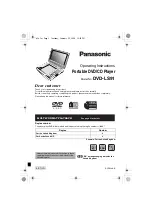
Page 9
60707-123
1315-00
Output voltage should be checked periodically to ensure
continued proper operation of the generating plant and
appliances. If the generator is not equipped with a
voltmeter, it can be checked with a portable meter.
Frequency can be checked by using an electric clock with a
sweep second hand. Timed against a wrist watch or a stop
watch the clock should be correct /- 2 seconds per
minute.
CONNECTING THE LOADS
Applying The Load
Allow the engine to warm up for two or three minutes before
applying any load. This will allow the engine to reach
normal operating temperature and oil to circulate throughout
the engine. A short warm-up time will permit the engine to
work more efficiently when the load is applied and will
reduce the wear in the engine, extending its life.
Receptacles have been provided to allow loads to be
connected to the generator. The loads should be added one
at a time. If a large motor is being started or multiple motors
are being started, they should be started individually and the
largest should be started first.
Plug your tools such as drills, saws, blowers, sump pump
and other items to be powered directly into the generator
receptacles. Before plugging in all the tools and cord sets,
recheck the rating of the generator set. Be sure it can
handle the intended load and is compatible with the voltage,
phase, and current ratings.
CAUTION: EQUIPMENT OVERLOAD
Keep the generator load within the generator and receptacle
nameplate rating. Overloading may cause damage to the
generator and/or the loads .
Most electric tools and appliances will have the voltage and
amperage requirements on their individual nameplates.
When in doubt consult the manufacturer or a local
electrician. The nameplate amperage rating for electric
motors can be misleading. See “Starting Electric Motors” in
Unit Capabilities (page 3).
These engine generator sets are inherently self regulating
based on engine speed. The engine governor will
automatically adjust itself to the load. No harm to the
generator will result if it is operated with no load connected.
Proper utilization of the receptacles located on the control
panel is necessary to prevent damage to either the
receptacles or the generator. The generator is a limited
source of electrical power, therefore pay special attention to
the receptacle and generator ratings.
WIRING
‘Hard Wiring’ this unit directly into a temporary construction
site electrical system or into a home as a back up is NOT A
SIMPLE DO-IT-YOURSELF JOB. For your safety all wiring
must be done by a qualified electrician and conform to the
National Electric Code and comply with all state and local
codes and regulations. Check with local authorities before
proceeding.
These generators come equipped with a 4 wire 120/240 volt
receptacle designed to power both 120 and 240 volt loads.
There are 2 hots, a neutral, and a ground wire connection in
the 4 wire 120/240 volt receptacle (L14-30R).
This
receptacle is protected by a double pole circuit breaker rated
for generator output. Below is a table of the matching plugs
for each of the models, note the 12 kW has two 4-wire plugs.
MODEL
NEMA SPEC
SIZE
WINCO
FOR PLUG
PART #
HPS6000HE
L14-30P
30 AMP 64492-000
HPS9000E
L14-30P
30 AMP 64492-000
HPS12000HE L14-30P
30 AMP 64492-000
AND
14-60P
60 AMP 300137
CAUTION: EQUIPMENT DAMAGE
Caution must be used when loading the generator,
overloading either of the 120 volt sides will cause the
breaker to trip, disconnecting all the loads
TEMPORARY SITE'S ELECTRICAL SYSTEM
To connect these units directly to an un-powered, isolated
construction site TemPower panel, have your electrician
connect to the control panel using a 120/240 volt, four wire
twist-lock plug (L14-30P). The use of locking receptacles
and locking plugs provides the convenience of quick
disconnect, for moving, while allowing non electrical workers
to safely reconnect the power. In addition they prevent the
plug from being accidentally removed by bumping or
vibration.
EXISTING ELECTRICAL SYSTEM
(Home Standby)
WARNING: PERSONAL DANGER
NATIONAL ELECTRIC CODE REQUIRES a fully isolated,
double pole double throw manual transfer switch be
installed any time a generator is being connected to an
existing distribution system. NEVER BACK FEED A
DRYER OR RANGE 240 VOLT RECEPTACLE.
If the generator set is connected to existing (electrical)
wiring circuits it is permitted only through a fully isolated
manual transfer switch. The transfer switch prevents
damage to the generator and other circuit components if
main line power is restored while the generator is
connected. Installing a transfer switch also permits the use
of normal fusing.
Many homes and construction sites are wired for at least 60
to 100 Amp entrance service, much greater than the
capacity of these portable generators. When installing the
generator at these sites, a secondary emergency distribution
panel may have to be installed, such as the Emergency
Transfer/Service (ET/S) system available through your
Winco dealer. The emergency distribution panel must be
installed by a licensed electrician according to all applicable
codes. The electrician will move the critical circuits to be
powered during the outage to the emergency panel. Keep in
mind only a limited amount of amperage is available from
the generator set. Some circuit breakers may still have to
be turned off to prevent an overload on the generator during
the initial start up. See the nameplate on your generator for
the amperage capabilities of your unit.


































